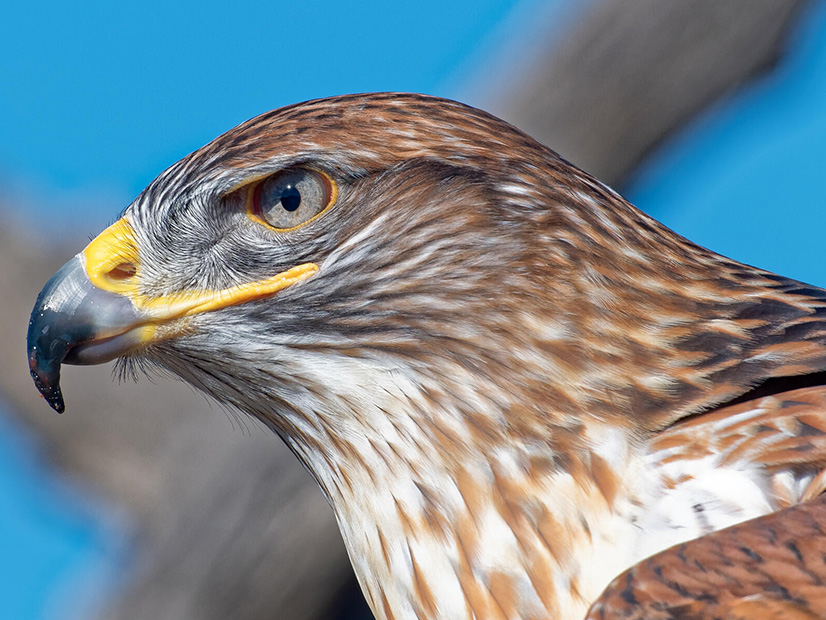
The Washington Fish and Wildlife Commission last month unanimously downgraded the status of ferruginous hawks from threatened to endangered.
Climate change and wind turbines were two of several factors contributing to that decision.
While ferruginous hawks are not listed as a threatened or endangered species by the federal government, they are listed for protection by the state of Washington.
The species has struggled in Washington because of a shrinking prey population, habitat encroachment by expanding agriculture, deaths from wind turbine strikes and wildfire destruction of nesting areas. The ferruginous hawks spend five months a year in the state when they nest from April through the summer; they migrate elsewhere in the Western U.S. for the other seven months.
The birds are among the nation’s largest hawks with average wingspans of 56 inches. They live in grasslands and shrub steppes, which are found extensively in south-central and southeastern Washington. Shrub steppe is a mostly treeless semi-desert filled with sagebrush and a complicated ecosystem at ground level.
The Washington Department of Fish and Wildlife (WDFW) tallied 55 nesting pairs of hawks in 1995 and 32 pairs in 2016, according to an August 2021 department report to the commission. About 60% of the nesting pairs are found in Washington’s Benton and Franklin counties.
The continent’s biggest nesting area is in Alberta, Canada, where ferruginous hawk populations have not been hit as hard.
Washington reviews the status of its sensitive species every five years, and 2021 is when the ferruginous hawks’ routine review was scheduled.
The August report by the WDFW pointed to climate change as one reason to downgrade the hawk population to endangered.
An Audubon computer modeling study concluded that a 1.5-degree Celsius increase in average temperature will trim ferruginous hawk habitats by 18% in the West, including part of southeastern Washington. A 2-degree increase would trim that habitat by 28%, the same modeling showed, while an increase of 3 degrees would translate into a loss of 58% of nesting areas.
Increasing temperatures and uncertainty about trends in rainfall are expected to lead to more grass fires in the shrub steppe habitats favored by the hawks, while harming the birds’ chief prey — ground squirrels, jackrabbits and prairie dogs, the report said. Ferruginous hawks tend to focus on a few specific species, such as ground squirrels, as prey and are reluctant to expand their diets, James Watson, a WDFW researcher, and one of the August report’s authors, told NetZero Insider.
Watson said eight ferruginous hawks have been killed by Washington wind turbines since 2001. A major wind project with 224 turbines has been proposed for shrub-steppe land in Benton County’s Horse Heaven Hills — land frequented by ferruginous hawks.
“Wind turbines are one of many types of fatalities. But they’re not the main reason” for the downgrade, WDFW habitat biologist Michael Ritter said. He noted expansion of agricultural land is a huge factor in the shrinking habitat and in the decision to declare the hawks endangered.
More than half of Washington’s original shrub steppe has been taken over by agriculture, according to the WDFW.
Watson said other states should keep an eye on the factors that led to the wildlife commission’s August decision. “This is a harbinger of things to come in other places,” he said.


